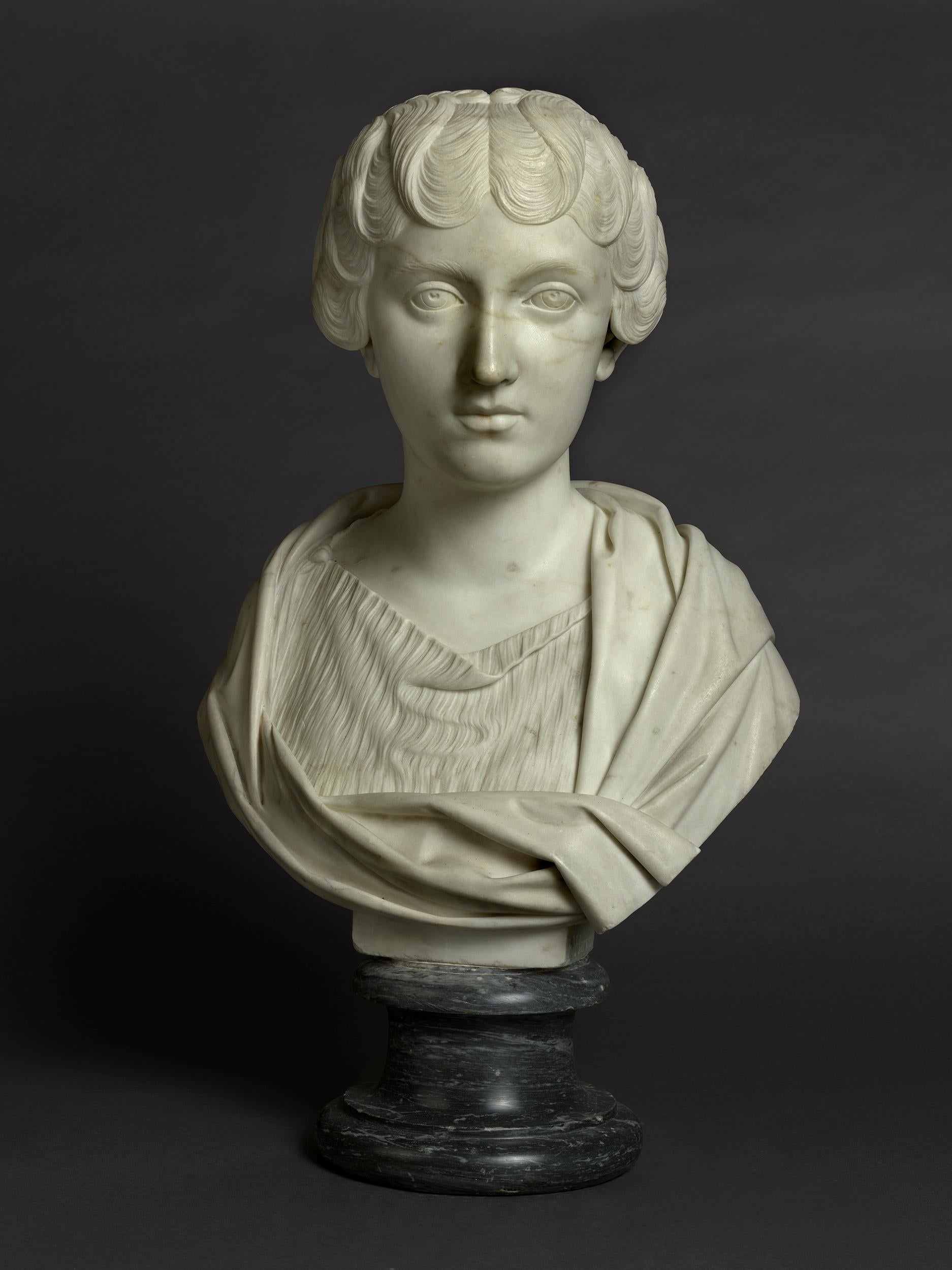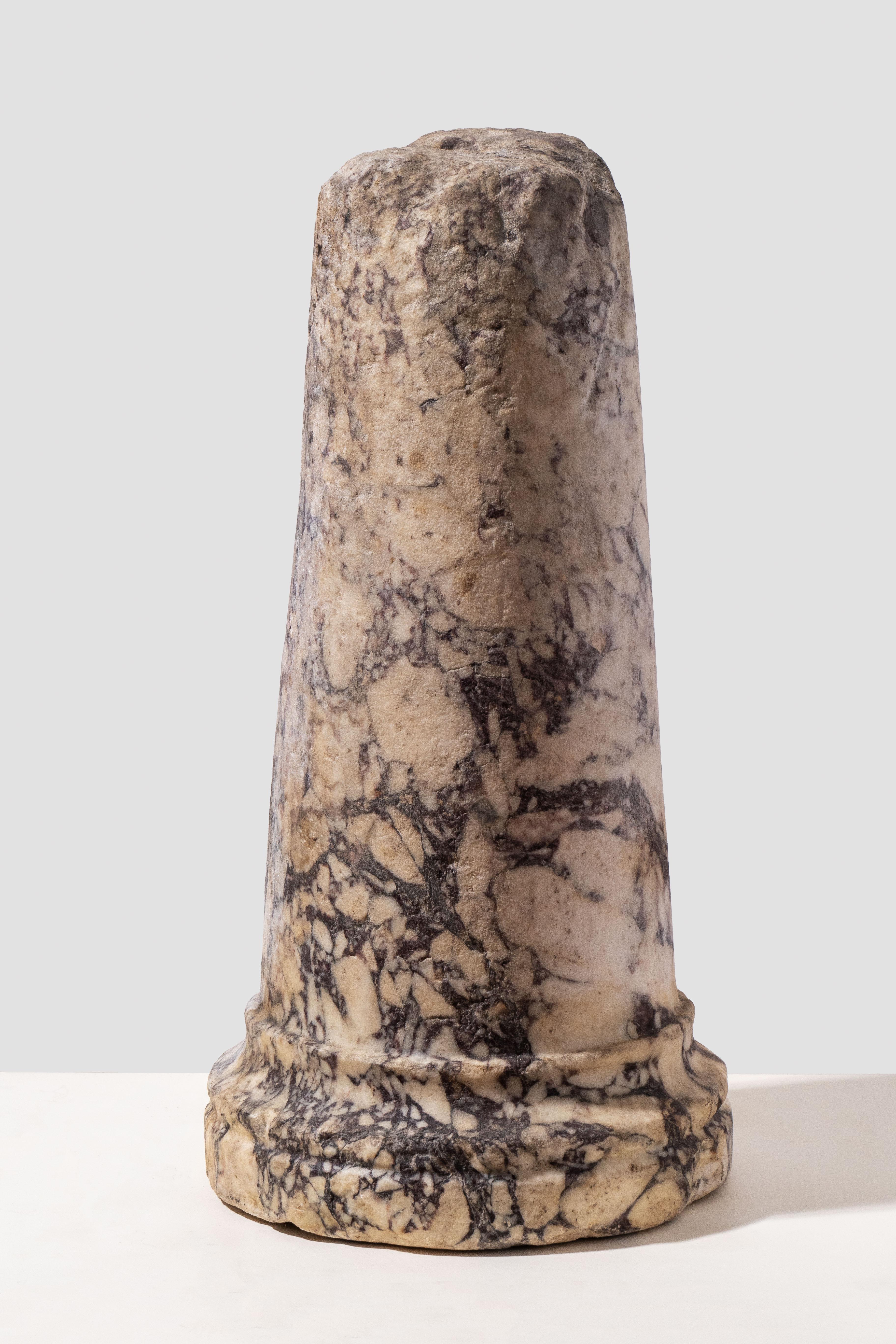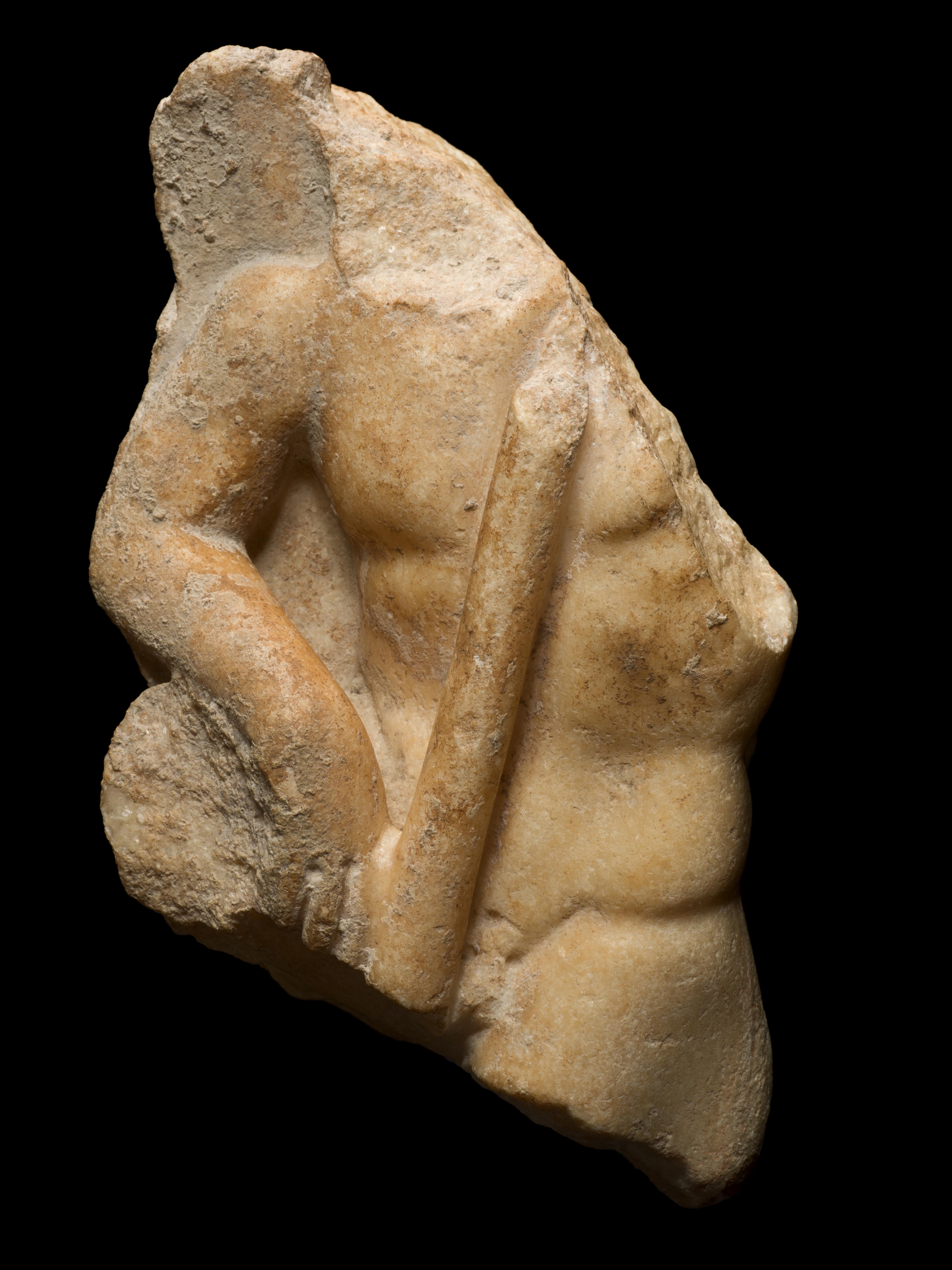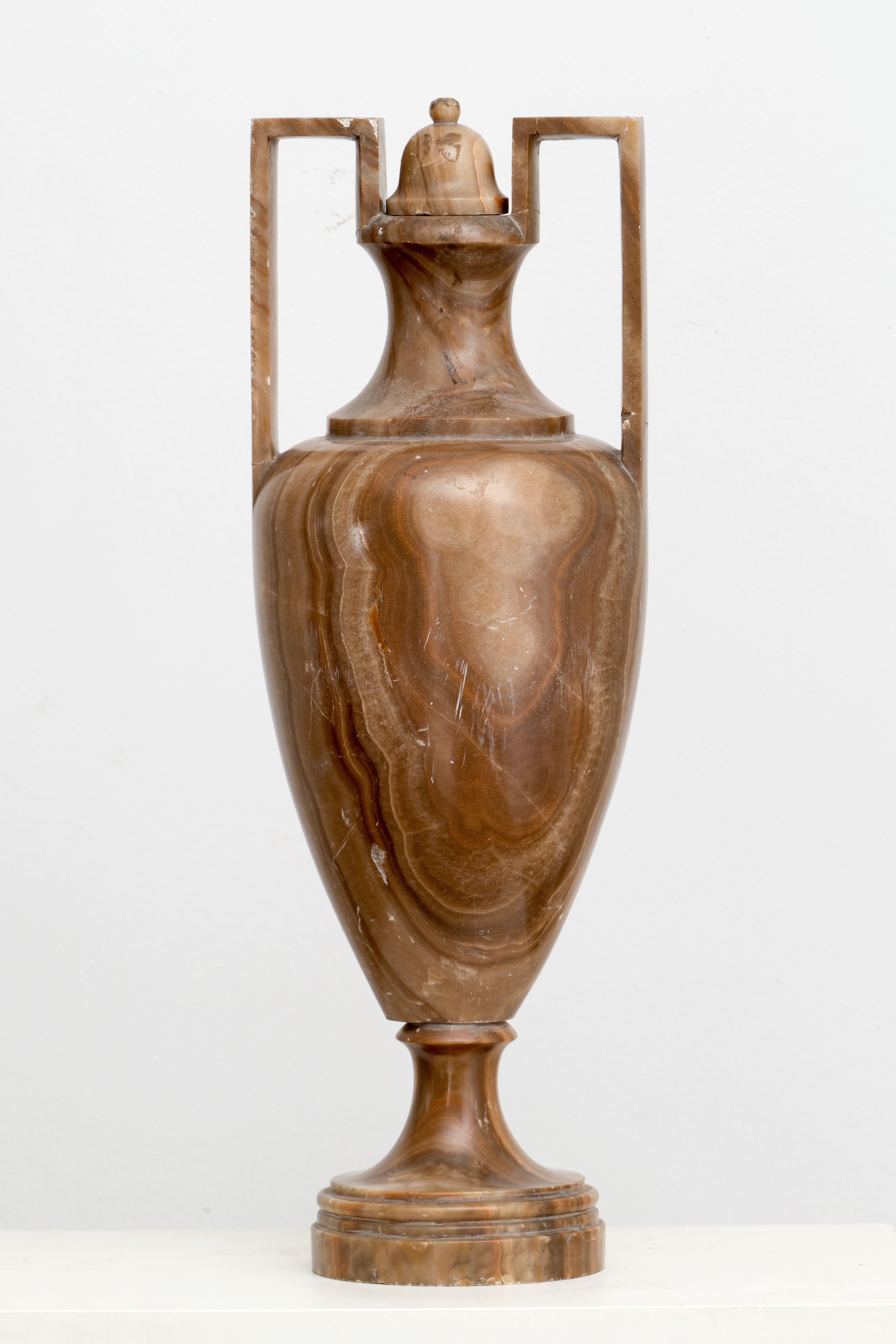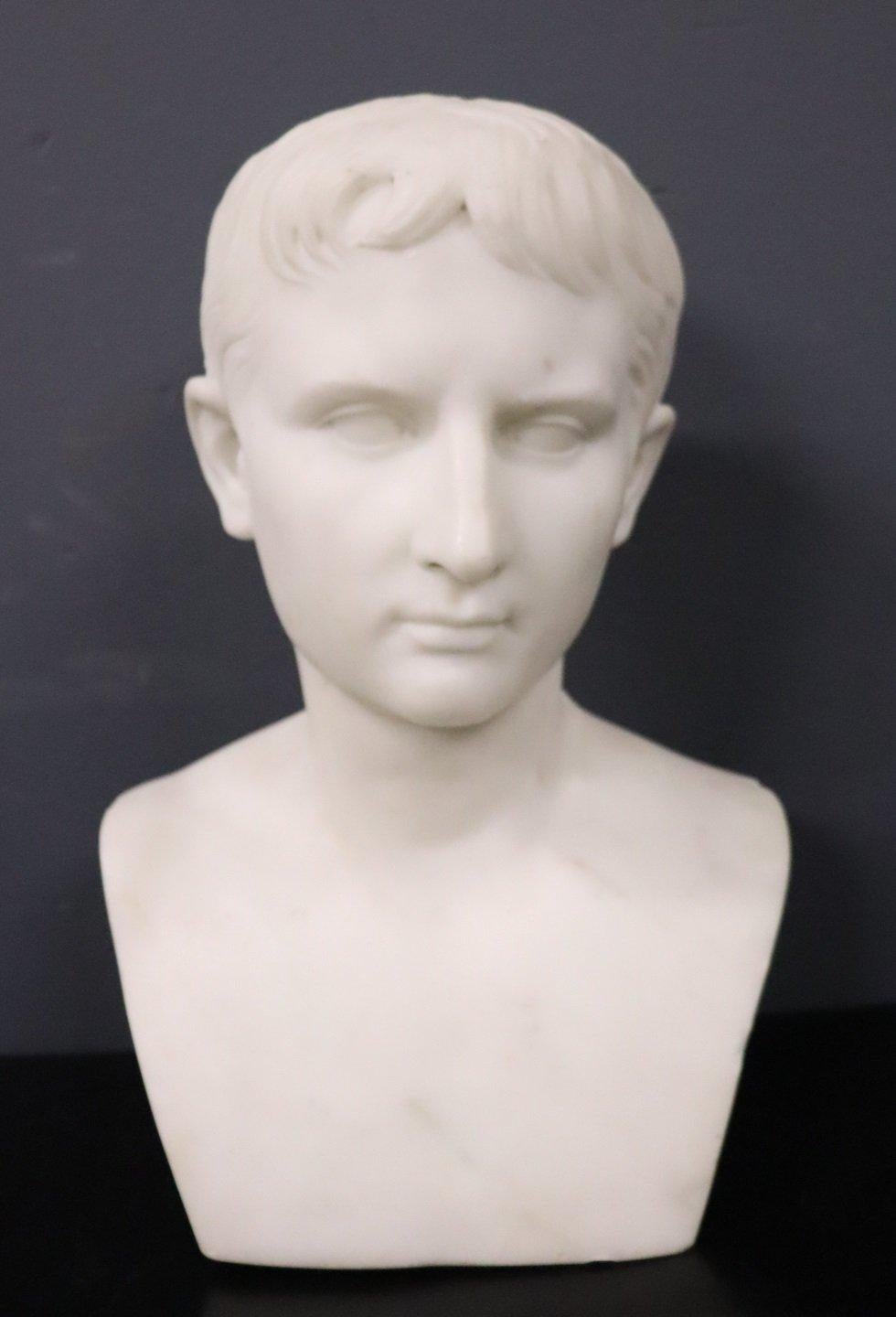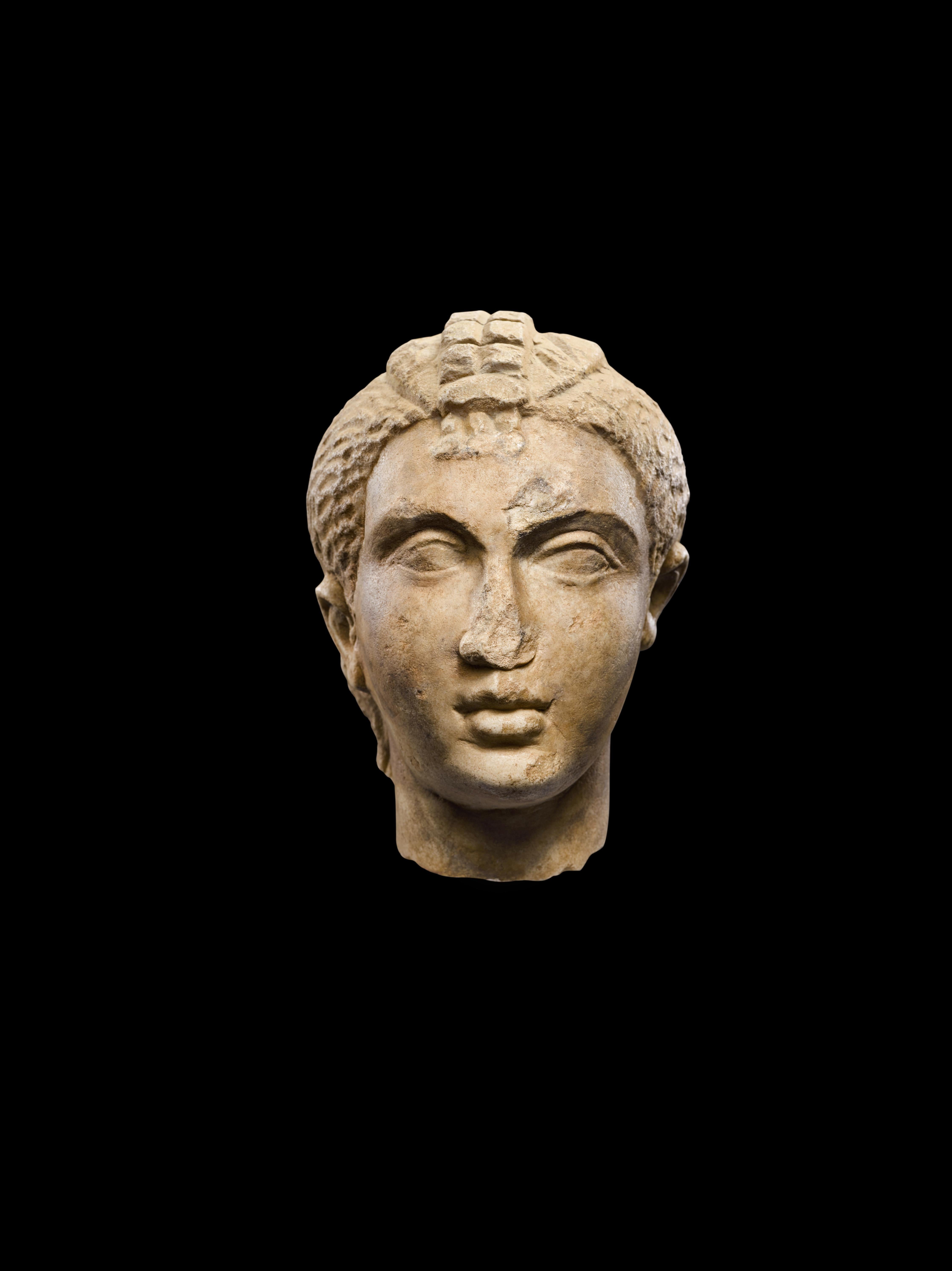Items Similar to 'Waiting For Advisor' African (Shona)
Want more images or videos?
Request additional images or videos from the seller
1 of 3
Samson Nyakanhongo'Waiting For Advisor' African (Shona)2001
2001
About the Item
Comes with mounting 8-1/4"x 6-3/4"x 4"
African Shona Shona artists and crafts people have been working in different media for generations. These include paintings, pottery, basket ware, wood carvings, and sculpture done in metal as well as the stone carvings. While there is not a long standing tradition of sculpture in what is now Zimbabwe (formerly Southern Rhodesia), stone carvings dating from the 15th century were seen in Great Zimbabwe, an excavated temple near Bulawayo. Most of the artifacts from this location have been moved to museums in Cape Town, South Africa or London. It is generally agreed that Zimbabwean stone sculpture as seen today began during the late colonial period of the 1950's and 1960's. During this period the artists and artisans depicted many of the traditional Shona and other tribal spiritual myths. Out of all the nations in Africa, the large varieties and abundant supplies of rock formations present throughout the Zimbabwe landscape provide artists with a medium for sculpture and carvings unique to their country. The Shona art sculpture of Zimbabwe combines the wonderful varieties presented by the stone with images drawn both from reality and abstract symbolism. Much of the stone used by Shona artists is quarried in areas which are adjacent or quite near the villages where the work is created. Often the land on which the stone is found is owned by the village or the local artists. The artists use stone such as Serpentine (somewhat old, having been formed about 2.6 billion years ago), with more than 200 color variations. The hardest and darkest of the Serpentine varieties is black, commonly known as Springstone or Africa stone. Less seen is Lepidolite, with its beautiful pale mauve coloration; and the very hard Verdite, found mostly in darker shades of green but with other variations as well. Commonly referred to as Rapoko stone in Zimbabwe, Steatite is a natural soft stone that falls under the general category of soapstone. Rapoko is found on every continent in the world with the possible exception of Antarctica. Its remarkable qualities have made this stone one of the most widely used minerals on earth. Over 10 million years old, Rapoko is a natural mineral, prized since ancient times for its durability, workability, beautiful character and ability to retain and radiate heat and resist chemicals. Native cultures, the world over, have carved Rapoko/Steatite into vessels, art objects, memorial and cultural items. Carved items have been found in the tombs of Pharaohs, in the igloos of the far north, in temples and palaces of China and India, in the mountains and river valleys of the Americas and the arid plains of Africa. There is a man made ceramic product, also called Steatite, which uses the natural Rapoko stone as one of its raw materials but has no other connection to the skillful efforts of talented Shona and other African artists. The wonderful natural character of stone is used both in its rough cut and textured state, or heated and burnished to a high gloss to reveal rich greens, browns, blacks and grays. The hardness, shape, density and quantity used of serpentine, verdite, sandstone, granite, steatite and other stones define the ultimate presentation of completed Shona art sculptures and carvings.
- Creator:Samson Nyakanhongo
- Creation Year:2001
- Dimensions:Height: 8 in (20.32 cm)Width: 6 in (15.24 cm)Depth: 4 in (10.16 cm)
- Medium:
- Period:
- Condition:
- Gallery Location:Milwaukee, WI
- Reference Number:
About the Seller
4.9
Platinum Seller
These expertly vetted sellers are 1stDibs' most experienced sellers and are rated highest by our customers.
Established in 1966
1stDibs seller since 2017
390 sales on 1stDibs
Typical response time: 1 hour
- ShippingRetrieving quote...Ships From: Milwaukee, WI
- Return PolicyThis item cannot be returned.
More From This SellerView All
- 'Dancing in the Wind' original Shona stone sculpture by Wellington KaruruLocated in Milwaukee, WI'Dancing in the Wind' is an original opal serpentine sculpture by the Zimbabwean artist Wellington Karuru. The artist presents an elegant and curvilinear figure of a woman, her hair seeming to billow upward and behind her. The sculpture is on one hand a celebration of the stone material, and on the other it calls back to art historical precedent: her body is brought to a high polish, reflecting the softness of skin, while her hair is left rough-hewn to create the effect of the untamed wind. At the same time, the woman's body is highly stylized and emphasizes her hips and belly, recalling Paleolithic "Venus" sculptures like the lauded Venus of Willendorf and thusly ideas of maternity and womanhood. opal stone (serpentine) not signed 23" high x 8" widest point x 4" smallest point, sculpture 4"x4"x4", sculpture bottom 1 x 6 x 6 inches, base Overall excellent condition with no signs of wear Sculpture comes with base. Born on August 17, 1976, Wellington Karuru is the first born to a family of five children and has two brothers and two sisters. As the first born child in a Zimbabwean family, many responsibilities were shouldered upon Wellington. Both his brothers, Gilbert and Esau, are also talented sculptors. He completed his primary and secondary education in Mashonaland West Province and was involved in almost every sporting activity at the school. After he graduated, he was employed at National Foods LTD where he worked as a machine operator for a period of four years and was later promoted to work as a sales clerk. In his free time he assisted some well known artists in sculpting, was able to learn much from them and soon thereafter started to develop his own talent and unique style. Inspired by such well known sculptors such as Gardener Sango and Garison Muchinjili, Wellington started sculpting small pieces for himself and soon found a buyer for his favorite piece titled ‘A Cry For Help’. From that day forward, he has never looked back. He eventually went to work with Garison Machinjili whose influence is clearly shown in his work. Some of his pieces have been chosen already for international exhibitions and galleries. Well established and internationally renowned artists like Joe Mutasa...Category
Early 2000s Contemporary Figurative Sculptures
MaterialsStone
- "My New Hairstyle" Carved Springstone signed by Witness BonjesiBy Witness BonjesiLocated in Milwaukee, WI"My New Hairstyle" is an original signed springstone sculpture by the Shona artist Witness Bonjesi. It depicts an elongated female face with textured hair and weighs 150 lbs. 40" x...Category
Early 2000s Figurative Sculptures
MaterialsStone
- "New Hair Style, " a Springstone Sculpture by Edgar SahondoBy Edgar SahondoLocated in Milwaukee, WI"New Hair Style" is an original springstone sculpture by Shona artist Edgar Sahondo. It depicts a female head with an elongated neck and stylized hair and features. 21" x 10" x 9" ...Category
Early 2000s Figurative Sculptures
MaterialsStone
- "Newborn Child, " signed by Tafadzwa MandalaBy Tafadzwa MandalaLocated in Milwaukee, WI"Newborn Child" is a signed springstone sculpture by Shona artist Tafadzwa Mandala. It weighs approximately 90 pounds and depicts a robed mot...Category
Early 2000s Figurative Sculptures
MaterialsStone
- Abstract Figure Contemporary Stone Sculpture Small Modern African Signed EarthyBy Aaron Perkins ChikumbirikeLocated in Milwaukee, WI"Drover" is an original yellow & green opal serpentine stone sculpture by Aaron Perkins Chikumbirike, a contemporary Shona stone sculptor. The artist signed the piece. It depicts an ...Category
Early 2000s Folk Art Figurative Sculptures
MaterialsStone
- 'Healing and Diagnosing' original Shona stone sculpture by Aaron P. ChikumbirikeBy Aaron Perkins ChikumbirikeLocated in Milwaukee, WI'Healing and Diagnosing' is an original stone sculpture by the Zimbabwean sculptor Aaron Perkins Chikumbirike. The sculpture presents a highly stylized figural grouping, as is so oft...Category
Early 2000s Contemporary Figurative Sculptures
MaterialsStone
You May Also Like
- Eighteenth-century Grand Tour marble bust of Faustina the YoungerLocated in London, GBSigned and dated: ‘F. Harwood Fecit 1764’ Collections: Probably commissioned by Alexander Gordon, 4th Duke of Gordon (1743-1827); Probably by descent at Gordon Castle, Banffshire to c.1948; Possibly acquired by Bert Crowther of Syon Lodge, Middlesex; Jacques Hollander (1940-2004); Christie’s, 5 December 2013, lot 101; Private collection; Sotheby’s, 2 July 2019, lot 106 Literature: John Preston Neale, Views of the seats of noblemen and gentlemen, in England, Wales and Scotland, London, 1822, vol.I, unpaginated. This marble copy of an ancient bust in the Musei Capitolini usually identified as Faustina the Younger, the daughter of Antoninus Pius and future wife of Marcus Aurelius, was made in Florence by Francis Harwood in 1764. Harwood was one of the most prolific suppliers of decorative marbles for the Grand Tour market and this finely worked example demonstrates the quality of luxury goods available to travellers to Italy. So often anonymous, this unusually signed and dated example, raises questions about the status of marble copies in the period and of sculptors such as Harwood who are known principally for ornamental work. Harwood’s origins remain obscure. He is documented living in Palazzo Zuccari with Joshua Reynolds and the Irish sculptor Simon Vierpyl at Easter 1752, he had certainly settled permanently in Florence by the following year, when he is recorded working with Joseph Wilton. He was admitted to the Florentine Academy on 12 January 1755 (as pittore Inglese, although he was described as scultore in the matriculation account). After Wilson returned to England in 1755 Harwood appears to have worked in a studio near SS. Annunziata with Giovanni Battista Piamontini who had made life-size copies of The Wrestlers and The Listening Slave for Joseph Leeson in 1754. In 1758 both sculptors were contracted to make a statue and a trophy to complete the decoration of the Porta San Gallo, Harwood completing a statue of Equality, installed the following year. By 1760 Harwood was on the brink of his most productive period as a sculptor, producing copies of celebrated antiquities for the ever-increasing audience of Grand Tour travellers and for the domestic market in London. In 1761 Harwood met the young architect James Adam who was in Italy specifically to make contact with suppliers for Robert Adam’s burgeoning practice back in Britain. The Adams offered a remarkably cohesive design package to their clients, encompassing not just architecture, but fixtures, fittings and furniture as well. Harwood was able to supply the brothers with marbles for their new interiors. At Syon, for example, Harwood produced a full-size copy of Michelangelo’s Bacchus for the new dining room the Adams had designed for Hugh Smythson, 1st Duke of Northumberland. Harwood seems to have also specialised in producing sets of library busts. In 1758 Charles Compton, 7th Earl of Northampton, a distinguished traveller commissioned a set of busts which remain in situ at Castle Ashby in Northamptonshire. It is perhaps no coincidence that the Adam brothers were producing designs for new interiors at Castle Ashby at this date. The set included representations of: Cicero, Julius Caesar, Marcus Aurelius, Faustina the Younger, Sappho, Seneca and Homer. Each of these busts Harwood seems to have replicated for multiple patrons, another Adam patron, Thomas Dundas...Category
18th Century Old Masters Figurative Sculptures
MaterialsMarble
- ANTIQUE ITALIAN ARCHITECTURAL FRAGMENT OF PLINTH IN 'BRECCIA MEDICEA' MARBLELocated in Milan, ITBRECCIA FRAGMENT PLINTH Italy, 18th Century Breccia medicea 55 x d 25 cm 21 3/4 x d 9 3/4 inCategory
18th Century More Art
MaterialsMarble
- ANCIENT ROMAN MARBLE RELIEF OF A MALE TORSO, ROME, 2ND/3RD CENTURY ADLocated in Milan, ITThis muscular male torso probably comes from a larger relief, which would have decorated the front part of a sarcophagus. It likely represents the figure of a satyr, standing, with t...Category
15th Century and Earlier Nude Sculptures
MaterialsMarble
- MONUMENTAL NEOCLASSICAL URN IN ALABASTER -Italy, 19th Century Alabastro fioritoLocated in Milan, ITMONUMENTAL NEOCLASSICAL URN IN ALABASTER Italy, 19th Century Alabastro fiorito 54 x 18 cm 21 1/4 x 7 in minor chips and damagesCategory
19th Century Figurative Sculptures
MaterialsAlabaster
- ANTIQUE ITALIAN NEOCLASSICAL MARBLE BUST OF EMPEROR OCTAVIAN, SIGNED CLERICILocated in Milan, ITItalian 19th Century marble bust depicting the young Emperor Octavian. The sculpture, carved in white Carrara marble, is an exquisite example of neoclassical works and shows a fascin...Category
Late 19th Century Figurative Sculptures
MaterialsMarble
- ANCIENT ROMAN MARBLE SCULPTURE PORTRAIT HEAD OF A GIRLLocated in Milan, ITPORTRAIT HEAD OF A GIRL Rome, circa 2nd/3rd century A.D. Marble height 18.4 cm height 7 1/4 in Provenance: Sotheby's, London, May 23rd, 1988, no. 240,...Category
15th Century and Earlier Figurative Sculptures
MaterialsMarble
Recently Viewed
View AllMore Ways To Browse
African Wood Art
Africa Wood Art
Come To Africa
Sculpture By African Artist
African Metal
Art Objects From Africa
African Black Sculpture
African Carved Art
African Wood Sculpture
Wood Sculpture Africa
African Wood Sculptures
African American Art Sculptures
Ancient Stone Sculptures
African Art Metal
Green Stone Sculpture
South Africa Sculpture
African Art Wood Sculptures
African Wood Craft
